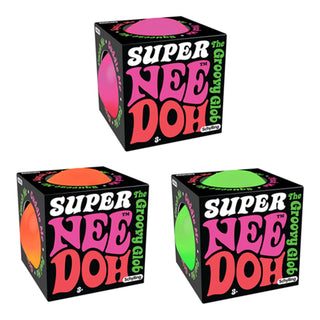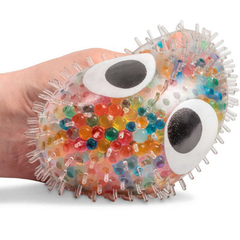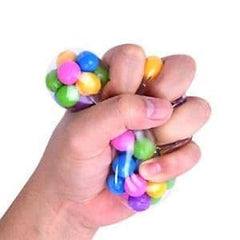Stress balls have become an useful tool for stress relief and hand exercise. These squeezable, pliable balls have gained immense popularity for their ability to provide comfort in moments of stress and anxiety. There is a huge variety of choice from dna stress balls, giant stress balls to mesh stress balls! But have you ever wondered what's inside a stress ball? What is the mystery inside these colourful, squishy balls. From the materials used to the science behind their stress-relief properties, we will delve deep into the heart of fidget stress balls.
Stress ball - The Outer Shell.
Before we explore what's hidden inside a stress ball, let's start with the outer layer—the part we interact with most. Stress balls are typically made of a soft, rubbery material that offers a comfortable grip. This outer shell comes in various colours and textures, allowing users to choose the one that feels best to them.
Materials Used in Stress Ball Shells:
- Polyurethane (PU) Foam: PU foam is a common material used for the outer shell of stress balls. It is known for its softness, durability, and ease of customization. PU foam can be moulded into various shapes and textures, making it perfect for stress ball production.
- Thermoplastic Rubber (TPR): TPR is another material used for stress ball exteriors. It provides a soft, tactile feel and is resistant to wear and tear.
- Silicone: Some stress balls are made from silicone, which is known for its flexibility and hypoallergenic properties. Silicone stress balls often have a smoother, less textured surface.
Stress Ball - The Filling
Now, let's get to the heart of the matter—what's inside the shell of a stress ball. The filling of a stress ball is where the magic happens, as it's responsible for the ball's squishy, malleable nature and its stress-relief properties.
- Gel-Filled Stress Balls: Gel-filled stress balls are among the most popular variants. These stress balls are filled with a gel-like substance, often a mixture of water and glycerine or a similar non-toxic, viscous liquid. The gel inside the ball provides a satisfying resistance when squeezed, making it an excellent tool for stress relief.
- Foam-Filled Stress Balls: Some stress balls are filled with foam beads or particles. The foam filling gives the ball a different texture and feel compared to gel-filled ones. When you squeeze a foam-filled stress ball, the foam compresses, offering a unique tactile experience.
- Sand-Filled Stress Balls: As the name suggests, these stress balls contain sand. The sand provides a slightly gritty texture and weight to the ball, making it ideal for hand exercises and stress relief.
- Memory Foam Stress Balls: These stress balls contain memory foam, the same material often found in pillows and mattresses. Memory foam is known for its ability to conform to the shape of your hand when squeezed, providing a comfortable and supportive grip.
- Air-Filled Stress Balls: Some stress balls are simply filled with air. These stress balls are soft and squishy, but they don't offer the same resistance as gel or foam-filled ones. They are typically lighter and easier to manipulate.
The Science of Stress Relief!
Now that we know what's inside a stress ball let's delve into the science behind how they work to relieve stress and anxiety.
- Muscle Relaxation: When you squeeze a stress ball, the muscles in your hand and forearm contract. As you release the squeeze, these muscles relax. This repetitive action promotes muscle relaxation and can help reduce tension.
- Stress Reduction: The act of squeezing and releasing a stress ball can also have a psychological impact. It can divert your attention away from stressors, providing a momentary break from worry and anxiety.
- Sensory Stimulation: The various textures and materials used in stress balls can provide sensory stimulation. Some people find the tactile experience of squeezing a stress ball soothing and calming.
- Hand Exercise: Regular use of a stress ball can also improve hand strength and dexterity. This makes stress balls a valuable tool for individuals recovering from hand injuries or conditions like carpal tunnel syndrome.
In the world of stress relief tools, stress balls fidget toys have secured their place as accessible and effective aids. Now that we've peeled back the layers to understand what's inside a stress ball, from the outer shell to the various fillings, we can appreciate the science behind their stress-relief properties. Whether you prefer a gel-filled, foam-filled, or sand-filled stress ball, these little companions offer a simple yet powerful way to manage stress, improve hand strength, and find comfort in the palm of your hand. So, the next time you reach for your stress ball, you can do so with a deeper understanding of its inner workings.





